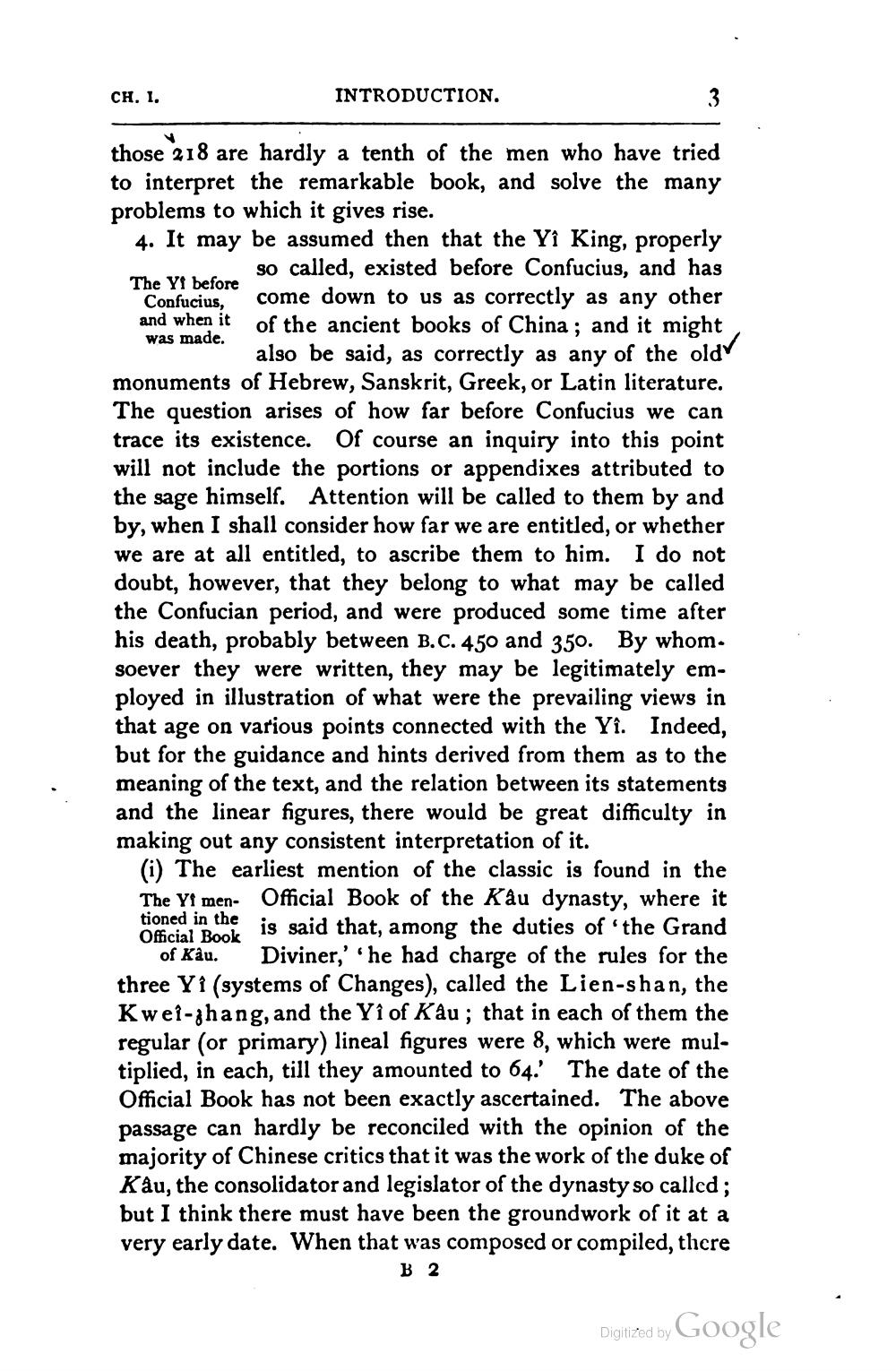________________
CH. 1.
INTRODUCTION.
those 218 are hardly a tenth of the men who have tried to interpret the remarkable book, and solve the many problems to which it gives rise. 4. It may be assumed then that the Yî King, properly
so called, existed before Confucius, and has The Yt before
Confucius, come down to us as correctly as any other and when it of the ancient books of China ; and it might was made.
* also be said, as correctly as any of the old monuments of Hebrew, Sanskrit, Greek, or Latin literature. The question arises of how far before Confucius we can trace its existence. Of course an inquiry into this point will not include the portions or appendixes attributed to the sage himself. Attention will be called to them by and by, when I shall consider how far we are entitled, or whether we are at all entitled, to ascribe them to him. I do not doubt, however, that they belong to what may be called the Confucian period, and were produced some time after his death, probably between B.C. 450 and 350. By whom. soever they were written, they may be legitimately employed in illustration of what were the prevailing views in that age on various points connected with the Yî. Indeed, but for the guidance and hints derived from them as to the meaning of the text, and the relation between its statements and the linear figures, there would be great difficulty in making out any consistent interpretation of it.
(i) The earliest mention of the classic is found in the The Yf men- Official Book of the Kâu dynasty, where it tioned in the is said that, among the duties of the Grand Official Book
of Kau. Diviner,' he had charge of the rules for the three Yi (systems of Changes), called the Lien-shan, the Kwei-zhang, and the Yî of Kau; that in each of them the regular (or primary) lineal figures were 8, which were multiplied, in each, till they amounted to 64. The date of the Official Book has not been exactly ascertained. The above passage can hardly be reconciled with the opinion of the majority of Chinese critics that it was the work of the duke of Kâu, the consolidator and legislator of the dynasty so called; but I think there must have been the groundwork of it at a very early date. When that was composed or compiled, there
B 2
Digitized by Google




